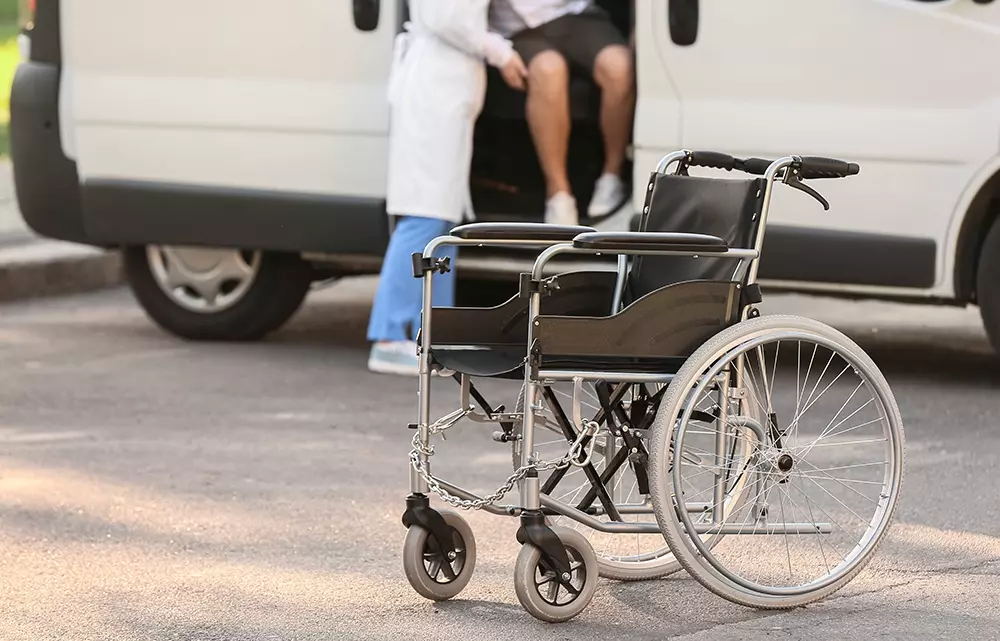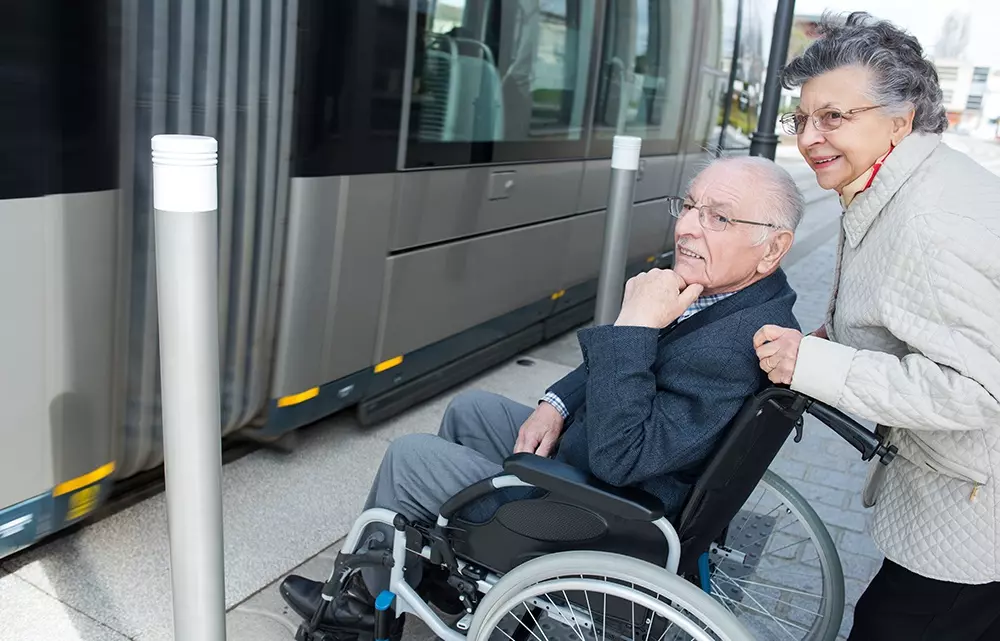Why Transportation Becomes a Barrier to Healthcare Access

Contents:
- Impact of Transportation Barriers in Healthcare
- Transportation Barriers to Healthcare Accessibility
- Importance of NEMT in Overcoming Transportation Barriers
- Role of NEMT Software in Increasing Efficiency
- Conclusion
Impact of Transportation Barriers in Healthcare
Transportation is a vital factor when it comes to accessing healthcare, particularly for people requiring special medical care because of chronic illnesses or serious physical injuries. Although seemingly not a medical problem, the inaccessibility to transportation – whether through personal or public modes – can reduce a person’s chances of getting the attention they need, and at times even discourage them from seeking care.
Transportation barriers to healthcare accessibility like not being able to afford a bus ticket or the lack of accessible bus routes to visit a doctor can adversely impact a person’s life and the road to recovery. Some specific consequences include:
- Missing or getting delayed for doctor/clinic appointments
- Limited access to pharmacies and medication
- Decreased frequency of prescription refills
- Unplanned economic burdens on patients
- Delays in an individual’s recovery or worsening of their condition
According to one study that surveyed the caregivers of 200 children who had previously missed several appointments, more than half (around 51%) of the parents and guardians said that transportation barriers were the primary reason why they missed those appointments.
It is important to acknowledge these problems and work towards making healthcare accessible.
We looked at some of the barriers to healthcare due to transportation limitations and how Non-Emergency Medical Transportation (NEMT) software can provide access for those who need it.
Transportation Barriers to Healthcare Accessibility

Various studies look to gain more insight into transportation barriers to healthcare access. In a survey entitled ‘Traveling Towards Disease: Transportation Barriers to Health Care Access’, researchers found links between health, transportation barriers, and income levels.
Another study found that these hurdles excessively affect low-income patients suffering from lifelong diseases. It also noted that over 5 million people in 2017 said they delayed their medical care appointments as a result of inaccessibility to suitable methods of transportation.
Also, the research in this study showed the extent of these barriers, with lack of access to private vehicles being one of the most common ones. Other factors included the distance to the medical center, transportation cost, irregular or inconvenient timing, and lack of proper funding.
Based on the mentioned studies, here are five transportation barriers to healthcare access:
1. Transportation Infrastructure
Poorly developed transportation infrastructure can strongly deter or delay people from getting to their medical appointments. This covers the limited availability of such infrastructure and difficulty in accessing routes. In other words, there may not be enough resources, facilities, and infrastructure may not be in safe conditions, or stations are not easily accessible. While this affects the general population, those who require the infrastructure to access medical help may be more seriously affected.
Public transport is another barrier, as trains and buses are usually overcrowded and may not possess the proper equipment to help people travel to health clinics.
2. Cost of Transportation
Owning a private vehicle is the surest method of reaching healthcare appointments. However, the rising cost of gas, insurance, and recurring maintenance costs of owning a personal vehicle, puts this beyond the reach of many low-income patients.
The cost of transportation also depends on geographical factors. For example, low-income patients from rural regions who can’t afford personal vehicles may also not have access to public transport that can help them reach their appointment. On the other hand, urban public transit is overcrowded and lacks the equipment and expertise to support people who need special medical help while traveling.
3. Vehicle Access & Mode of Travel

Not owning a personal vehicle negatively impacts a person’s mobility, especially in the absence of a well-developed public transport system, which is a significant barrier to healthcare access. This also includes inaccessibility to a private vehicle belonging to friends or family.
Inaccessibility to vehicles is also directly related to the inability to regularly access medical services, whether routine checkups or emergency visits.
A study of caregivers based out of Houston showed that around 82% of people who could reach their medical appointments had vehicle access.
4. Distance and Time
Most studies that have investigated different transportation hurdles to healthcare access have noted distance as a significant barrier.
Long-distance travel to healthcare providers and clinics can be a major deterrent in reaching medical clinics and appointments. This, combined with inconvenient time slots and appointments on busy days, can adversely affect a person’s access to healthcare and burden them further in terms of time lost and days taken off work just to make their appointment.
5. Public Policy Changes
The Traveling Towards Disease survey also discussed a study that investigated the relationship between public transportation policy and healthcare utilization. Notably, it found that a change in policy that limited Medicaid payments for transportation resulted in a decrease in medication refills.
Budget cuts that affect transportation especially hit those coming from poorer backgrounds, as it leads to a shortage of public transit and low maintenance of facilities and infrastructure. Often, transit routes may get shut down as well. Budget cuts can also result in strikes and other disruptions, which further affect people trying to access healthcare facilities.
Importance of NEMT in Overcoming Transportation Barriers

To overcome the health implications posed by transportation barriers, it is crucial to have an affordable and efficient solution for chronically ill, disabled, and injured people who need to travel to their doctor’s office, hospital, or rehabilitation center. NEMT may provide a solution.
Non-Emergency Medical Transportation, or NEMT, is a type of business service that provides transport facilities to those who don’t have a life-threatening emergency but need assistance in getting to a medical appointment – help that a normal transport service can’t provide or is too expensive for the patient.
NEMT businesses generally own medically-equipped vans and SUVs with unique features to help people with special medical needs. This service is helpful for those who are injured, recovering from accidents, chronically ill, or unable to drive themselves or travel alone. It is beneficial for people with disabilities who do not have any means to travel and live by themselves.
Role of NEMT Software in Increasing Efficiency
Beyond providing much-needed transportation for those who need it, NEMT software can also help increase the efficiency of a business with features like scheduling, dispatching, routing, and billing. It also helps protect the privacy of patients and their health history.
NEMT software is also valuable for allowing clients to book online appointments. Thus, with the incorporation of NEMT software, a company can improve its efficiency and provide customer satisfaction.
Conclusion
The first step in overcoming transportation barriers to healthcare accessibility is to recognize the causes and the cost for millions of Americans. It is the only way to achieve greater health equity.
NEMT services work towards providing efficient transport services while being cost-effective and recognizing customers’ needs.
About the author

As RouteGenie's Marketing Director, Yurii gained deep knowledge in the NEMT industry. He is an expert in marketing, utilizing all marketing channels to build RouteGenie's brand and to make sure NEMT providers have access to powerful NEMT software that can boost their growth. Yurii shares his knowledge by writing content on topics related to marketing, and the healthcare industry: medical transportation, home care, and medical billing.
The author assumes no responsibility or liability for any errors or omissions in the content of this site. The information contained in this site is provided on an "as is" basis with no guarantees of completeness, accuracy, usefulness or timeliness.